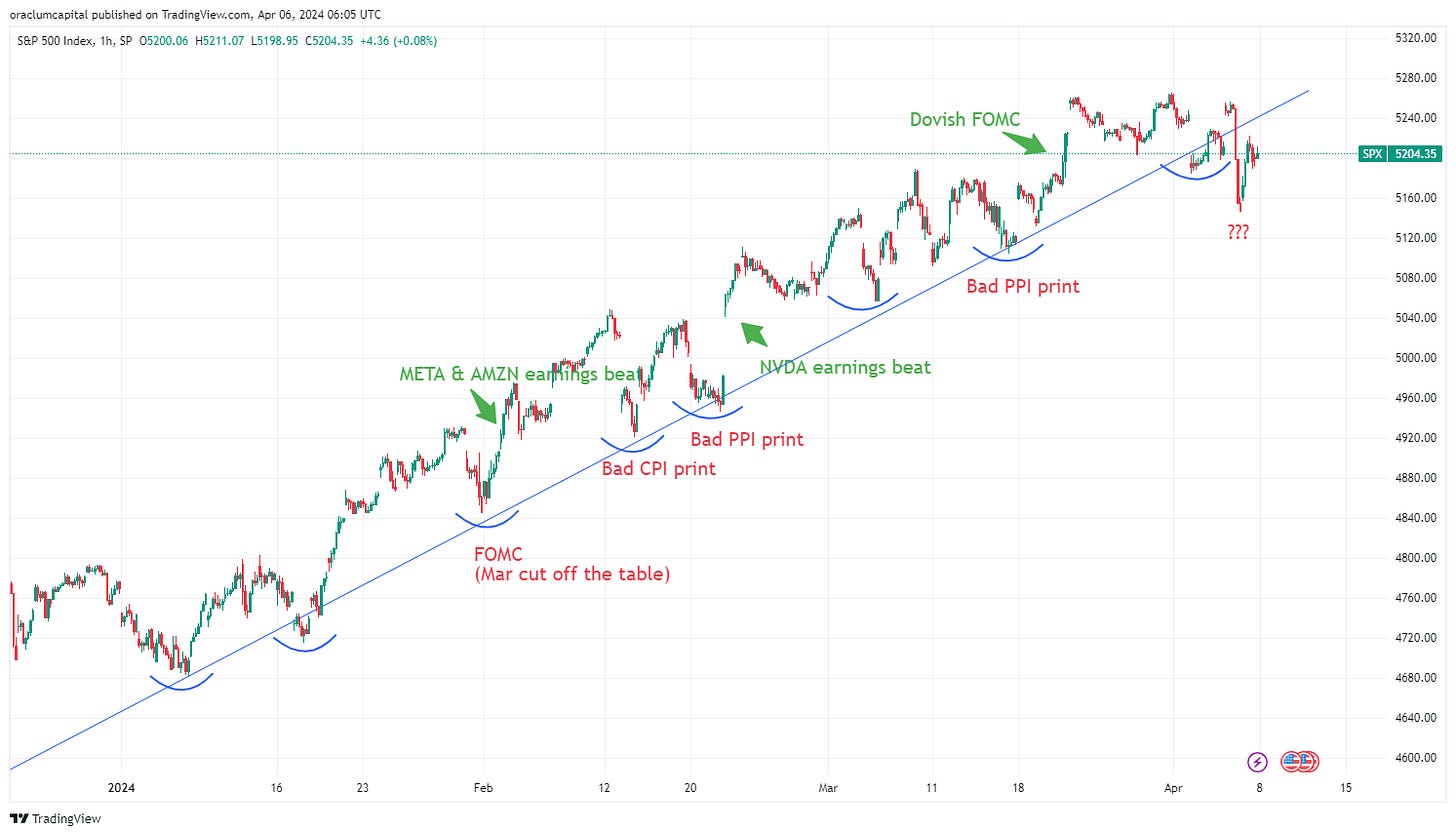No landing?
Paid subscriber analysis
Before we dive into today’s topic, just a brief comment on the price action over the past two days.
Remember this trend (figure below)? It got broken to the downside this week (already on Tuesday), and it failed to sustainably bounce back (especially after the sharp move down on Thursday). That’s a bearish sign. Friday was buy-the-dip once again (more like regression to the mean), but it didn’t push back above trend, which is a potential signal for a correction. Doesn’t have to be, but the probability is higher, that’s for sure.
What caused it? A number of things. Some people were citing tensions in the Middle East (Israel vs Iran), which could explain the hike in oil prices and gold (wars typically have this immediate effect; equities down, gold and oil up), others were citing one Fed speaker saying that if inflation keeps being sticky, they see no need for a rate cut this year (even though Powell keeps saying the opposite), and yet another explanation was a leaked unemployment report, which came in Friday morning signalling a very strong labor market: US economy added 303,000 jobs in March (a lot more than expected), and unemployment rate actually went down, to 3.8%.
Why the negative reaction to this? In short: a very robust labor market basically means that there is no need for rate cuts yet.
That’s the topic of today’s newsletter: entertaining the possibility of a “no landing” scenario.
A quick updates on what different “landings” mean:
A hard landing 🛬💥📉is the standard macro model: Fed raises interest rates to kill inflation (i.e., to cool an overheating economy), but higher interest rates increase borrowing costs, which takes liquidity out of the system: banks give out less loans, consumers spend less, firms earn less, economic activity goes down, we get a recession. The interest rates go down hard and fast. But the Fed successfully lowers inflation. Macro 101.
A soft landing 🛬🏅📈 is a rare occurrence: Fed manages to lower inflation without triggering a recession. Interest rates can go down gradually, as inflation stays low, and the economy keeps growing.
A no landing 🛫 📈scenario is basically higher for longer on steroids. The economy keeps growing, markets keep rallying, inflation is sticky, so interest rates don’t really need to go down at all. We keep them high, and the Fed doesn’t cut for as long as inflation is sticky and economic conditions are good.
The “landing” obviously refers to interest rates. When on a high, the question is do they go down rapidly (because of a recession), gradually (because inflation went down without a recession), or not at all.



